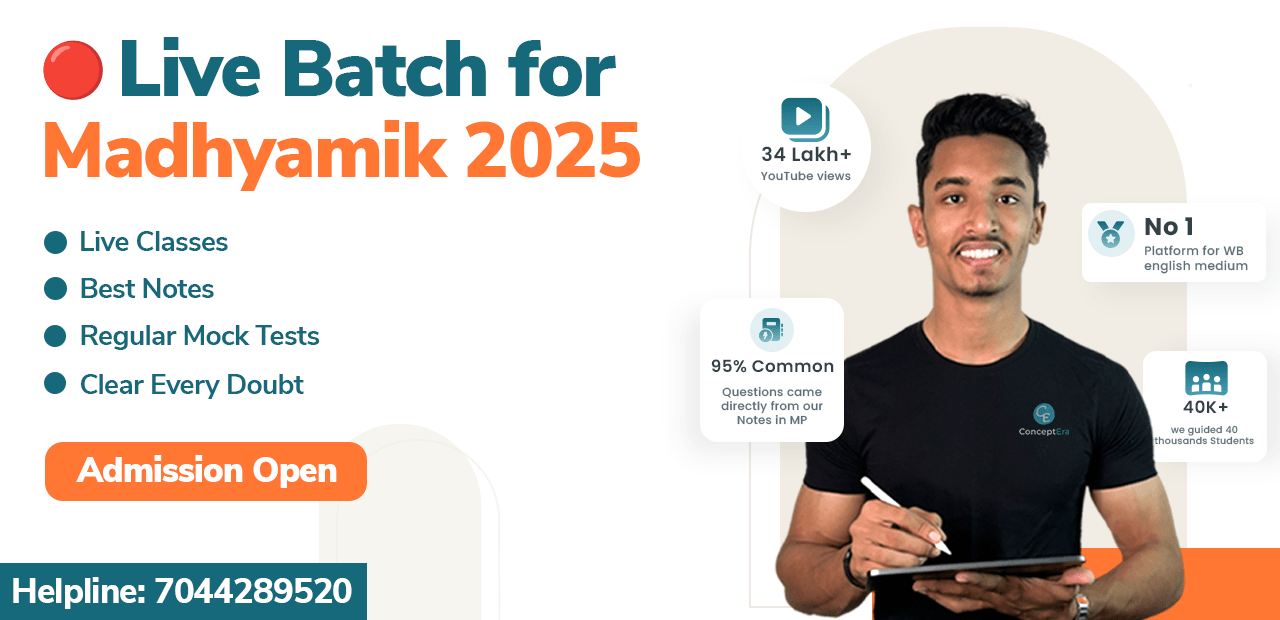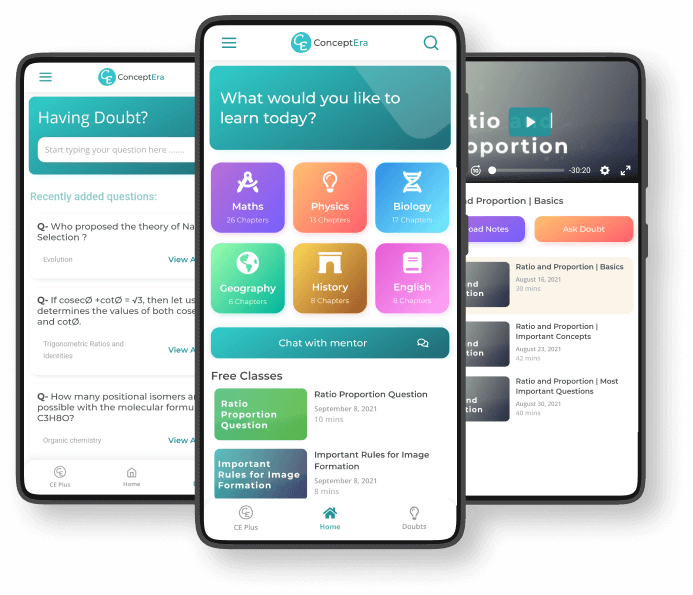Group-A
1. Multiple choice question.
1. The game of football was introduced in India by-
(a) English (Ans)
(b Dutch
(c) French
(d) Portuguese
2. Bipin Chandra pal wrote –
(a) Sattar Batsar (Ans)
(b) Jeebon Smirity
(c) A nation in making
(d)Ananda Math
3. The editor of Bamabodhini patrika was-
(a) Umesh Chandra Datta (Ans)
(b) Sisir Kumar Ghosh
(c) Krishna chandra Mazumdar
(D) Dwarkanath Vidyabhushan
4. The General Committee of public Instruction was formed in-
(a) 1723 AD
(b) 1913 AD
(c) 1813 AD
(d) 1823 AD (Ans)
5. ‘Naba Bidhan’ was established by-
(a) Dayanand Sarswati
(b) Keshab Chandra Sen (Ans)
(c) Swami Vivekanand
(d) Maharshi Debedranath Tagore
6. Sui Munda Was the leader of-
(a) Chuar Rebellion
(b) Kol Rebellion
(c) Santhal Hool (Ans)
(d) Munda Rebellion
7. By the forest law of 1878 A.D., forests were divided into-
(a) two categories
(b) three categories (Ans)
(c) four categories
(d) five categories
8.The Great Revolt of 1857 was described as India’s First War of Independence by-
(a) Subhas Chandtra Bose
(b) Jawaharlal Nehru
(c) V.D Savarkar (Ans)
(d) Rashbehari Bose
9. The first political association of India was-
(a)Indian Association
(b) Indian National Congress
(c) Banghasha Prakashika Sabha
(d) Landholder’s Society (Ans)
10. ‘Bharat mata’ was painted by-
(a) Abanindranath Tagore (Ans)
(b) Rabindranath Tagore
(c) Nandalal Bose
(d) Gagendranath Tagore
11. The process of Half-tone printing was introduce in India by-
(a) Upendrakishore Roychowdhury (Ans)
(b) Sukumar Roy
(c) Panchanan Karmakar
(d) Charles Wilkins
12. Vishva-Bharti was founded by-
(a) Ishwarchandra Vidyasagar
(b) Rabindranath Tagore (Ans)
(c) Swami Vivekananda
(d) Debendranath Tagore
13. The Leader of Eka’ movement was-
(a) Madari Pasi (Ans)
(b) Dr.Ambedkar
(c) Mahatma Gandhi
(d) Baba Ramchandra
14. All India Trade Union Congress was founded in-
(a) 1917 AD
(b) 1920 AD (Ans)
(c) 1927 AD
(d)1929 AD
15. The Badroli Satyagraha was held in-
(a) Bombay
(b) Punjab
(c) Madras
(d) Gujarat (Ans)
16. The Anti-Partition movement in Bengal had taken place in-
(a) 1904 AD
(b)1905 AD (Ans)
(c) 1906 AD
(d) 1911 AD
17.Matangini Hazra was associated with the Quite India movement in-
(a) Tamluk (Ans)
(b) Sutahata
(c) Barishal
(d) Purulia
18. Dipali Sangha was founded by-
(a) Kalpana Datta
(b) Lila Nag Roy (Ans)
(c) Bsanti Devi
(d) Bina Das
19. ‘Iron Man of India’ refers to-
(a) Mahatma Gandhi
(b) Sardar Vallabhnhai Patel (Ans)
(c)Muhammad Ali Jinnah
(c) Rajendra Prasad
20. ‘A Train to Pakistan’ was written by-
(a) Jawaharlal Nehru
(b) V.P Menon
(c) Khushwat Singh (Ans)
(d) Salman Rushdie
Group-B
2. Answer any sixteen questions, taking at least one from each segment:
Segment: 2.1
Answer in one sentence
(2.1.1) Who was the editor of ‘Somprakash’?
Ans: Vidyasagar was the editor of ‘Somprakash’.
(2.1.2) Where is government documents preserved?
Ans: The government documents preserved in archieves.
(2.1.3) Which century is called the century of Renaissance in Bengal ?
Ans: 18th – 20th century is called the century of Renaissance in Bengal.
(2.1.4) What is meant by ‘Ulghulan’ ?
Ans: The meaning of ‘Ulghulan’ is revolution.
Segment: 2.1
2.3 Write whether the following statement is true or false
(2.2.1) The Ramakrishna Mission was set up by Sri Ramakrishna. False
(2.2.2) Lord Dalhousie was the Governor-General of India during the Great Revolt. False
(2.2.3) Rabindranath Tagore supported the cause of the European community through the novel ‘Gora’.
(2.2.4) Gandhiji and Dr. Ambedkar jointly fought for the rights of the dalit. False
Segment: 2.3
Match the column ‘A’ with ‘B’
| Column A | Column B |
|---|---|
| 2.3.1) Aurobindo Ghosh | Bengal National School and Collage |
| 2.3.2) Taraknath Palit | Bengal Technical Institute |
| 2.3.3) Nabagopal Mitra | Hindu Mela |
| 2.3.4) Rashid Ali | Indian National Army |
Segment: 2.4
On the given outline map of India, locate and label the following places.
(2.4.1) Regions of the Santhal Rebellion
(2.4.2) A centre of the Indigo Revolt
(2.4.3) The princely state of Hyderebad
(2.4.4) The reorganised state of Gujarat
Segment: 2.5
Match the statements below with their appropriate explanation:
(2.5.1) Statement : The ‘Eka movement was organised in Uttar Pradesh.
Explanation 1 : This was an individual movement.
Explanation 2 : This was a peasant movement.
Explanation 3 : This was a workers’ movement.
(2.5.2) Statement : The Government of India framed the Meerut Conspiracy Case in 1929.
Explanation 1 : to supress the revolutionaries.
Explanation 2 : to supress the civil Disobedience Movement.
Explanation 3 : to supress countrywide communist activities.
(2.5.3) Statement : The leftists played an important role in the anti-colonial movements o 20th century of India.
Explanation 1 : The leftists were the supporters of zamin-dars and industrialists.
Explanation 2 : They were the supporters of British imperialism.
Explanation 3 : They were the supporters of the united struggle of peasants and workers against British Rule.
(2.5.4) Statement : Indian women participated in the national movement for the first time during the anti-partition movement.
Explanation 1 : because they were inspired by Gandhiji.
Explanation 2 : because they were inspired by the revolutionary theories of Aurobindo Ghosh.
Explanation 3 : because they wanted to boycott foreign goods.
Group-C
3. Answer the following questions in two or three sentences (any eleven):
3.1 What is Social History ?
Ans: Social history is the history of entire society from socio-historical point of view. It is a broad branch of history that studies the experiences of ordinary people.
3.2 What is the importance of newspapers as a source of History ?
Ans: The newspaper are great source for the local, national and international news. Newspaper published articles on current events.
3.3 Analyse the role of Raja Radhakanta Deb in promoting women’s education in Bengal.
Ans:
3.4 Why was there a rift in the Brahmo Samaj of India ?
Ans: At first Debendranath Tagore very much appreciated the services of Keshab Chandra, but very soon differences arose between the two with regard attitude of the Brahmo Samaj to the social problems of the day.
3.5 Was the Farazi movement a movement of religious revival ?
Ans: It may be said that the movement was essentially an agrarian movement. It, indeed, started as religious reform movement but soon the movement was stregthened by the participation of peasant masses.
3.6 Briefly describe how the planters tortured the indigo cultivators.
Ans: The powerful European indigo-planters forced the peasants to grow indigo. They even did not hesitate to convert the best food growing area into indigo cultivation. Peasants were thus evicted from villages and thereby the plantation area was increased.
3.7 Why is the second half of the nineteenth century called the ‘age of associations’ ?
Ans: Beginning with 1836 a number of political associations came to be established across the country which played an important role in moulding the politics of the country. Thus the second half of 19th century called the ‘Age of Association’.
3.8 How did the novel ‘Ananda Math’ inspire the spirit of nationalism ?
Ans: Anandamath of Bankim Chandra bears historic worth in the narrative of nationalism in modern India. Written in the background of Sanyasi rebellion the Anandamath of Bankim Chandra Chatterjee instilled amongst the Indians the spirit of nationalism.
3.9 What was the role of the Indian Association for the cultivation of Science in the development of Scientific Education in Bengal ?
Ans: The Indian Association for the Cultivation of Science, established in July 1876 at 210 Bowbazar street, Calcutta, is a national institution for higher learning whose primary purpose is to foster high quality fundamental research in frontier disciplines of the basic sciences.
3.10 What was the objective of founding Vishwa-Bharti ?
Ans: To ensure that tge students are taught the importance of the Indian heritage. To give it a universal humanist outlook. The goal of education was to ‘synthesize knowledge and feeling’.
3.11 With what objectives was the All India Trade Union Congress founded ?
Ans: The objectives were to co-ordinate the activities of all the labour organization in all trades and all provinces of India, and generally to further the interest of the Indian labour in matters economics, social amd political.
3.12 Why was the workers and peasants party formed ?
Ans: WPP was to strive for a broad anti-imperialist front for the achievement of complete independence with ultimateaim of establishmentbof socialism in the independent country.
3.13 Why was Rashid Ali day observed ?
Ans:
3.14 Who are known as Dalits ?
Ans: Dalits are the fifth caste in the Hindu society. The untouchables came to be known as Dalits. Dalits represented the most exploited and pokrest sectors in society.
3.15 What is meant by the Instrument of Accession ?
Ans: The Instrument of Accession is an agreement by which a state decides to join another state. This is a legal document first incorporated in 1935 in the Government of India Act.
3.16 Why was the Nehru-Liaqat Pact (1950) signed ?
Ans: The pact was to guarantee the rights of minorities in both India and Pakistan after after the partition of India and to avert another war between two.

